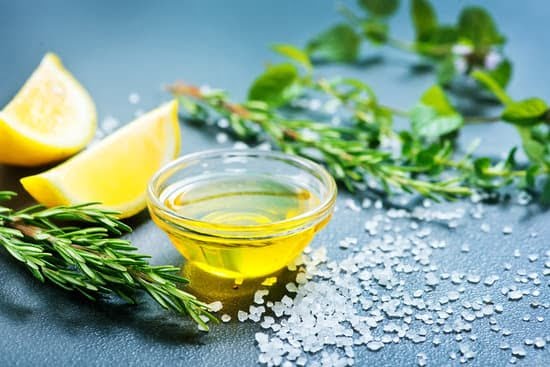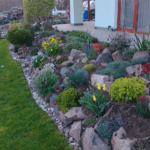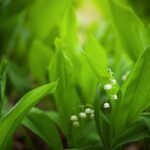Are you looking for some edible gardening ideas to start your own backyard garden? Edible gardening is a rewarding and fulfilling hobby that not only provides fresh and healthy produce but also allows you to connect with nature. In this article, we will explore the world of edible gardening and provide you with tips and ideas to get started on your own garden.
Edible gardening involves growing fruits, vegetables, herbs, and other plants that are meant to be consumed. From tomatoes and lettuce to strawberries and herbs, there are countless options for what you can grow in your own edible garden. Whether you have a spacious backyard or just a small balcony, edible gardening can be tailored to fit any space.
In the following sections, we’ll delve into the benefits of growing your own edible garden, how to choose the right location for your garden, essential tools and supplies you’ll need, popular plants for beginners, seasonal gardening tips, organic pest control methods, creative ways to use your garden produce and more. Whether you’re a seasoned gardener or a complete beginner, there is something in this article for everyone looking to embrace the joy of edible gardening.
So let’s dive in and discover the wonderful world of growing your own food.
Benefits of Growing Your Own Edible Garden
Growing your own edible garden can bring a multitude of benefits, both for you and the environment. Here are some reasons why you should consider starting your very own edible garden:
1. Fresh and Nutritious Produce: By growing your own fruits, vegetables, and herbs, you can ensure that you are consuming the freshest and most nutritious produce possible. This can lead to a healthier diet and overall well-being.
2. Cost-Effective: Maintaining an edible garden can help you save money on groceries in the long run. With a bit of initial investment in seeds, soil, and tools, you can enjoy an abundance of homegrown produce at a fraction of the cost of store-bought items.
3. Sustainable Living: When you grow your own food, you are reducing the carbon footprint associated with transportation and packaging that comes with store-bought produce. Additionally, by adopting organic gardening practices, such as composting and using natural pest control methods, you are contributing to a more sustainable way of living.
4. Therapeutic Benefits: Gardening has been proven to have therapeutic effects on mental health. The act of tending to plants, observing their growth, and being surrounded by nature can reduce stress and anxiety while promoting mindfulness.
By embracing these benefits, you can enjoy the numerous rewards that come with nurturing your very own edible garden. Whether it’s by creating a small herb garden on your kitchen windowsill or dedicating a larger plot of land for vegetable cultivation, there are endless possibilities for incorporating edible gardening ideas into your lifestyle.
Choosing the Right Location for Your Edible Garden
When it comes to starting your own edible garden, one of the most crucial decisions you’ll need to make is choosing the right location. The success of your garden depends greatly on finding the perfect spot with adequate sunlight, good soil quality, and proper drainage. Here are some key factors to consider when selecting a location for your edible garden.
Sunlight Requirements
Most edible plants require a minimum of 6-8 hours of sunlight per day to thrive. When scouting for the ideal location, take note of the sun patterns in your yard throughout the day. Choose an area that receives ample sunlight and avoid spots that are shaded by buildings or large trees for most of the day.
Soil Quality and Drainage
The quality of your soil and its ability to drain water effectively are essential for the success of your edible garden. Conduct a soil test to determine its pH level and nutrient content. Look for a location with well-draining soil to prevent waterlogged roots, which can lead to rot and disease in your plants.
Proximity to Water Source
Consider how far your chosen location is from a water source, such as a hose or outdoor faucet. It’s important to have easy access to water for regular irrigation, especially during dry spells or hot weather. If possible, select a spot that is within reach of a watering source or consider installing a drip irrigation system for convenience.
By carefully considering these factors and selecting the right location for your edible garden, you can set yourself up for success and enjoy a bountiful harvest of fresh, homegrown produce. With the right amount of sunlight, good soil quality, and easy access to water, you’ll be on the path to creating a thriving edible garden full of delicious fruits, vegetables, herbs, and more.
Essential Tools and Supplies for Edible Gardening
When it comes to starting an edible garden, having the right tools and supplies can make all the difference in terms of success and enjoyment. Here are some essential items you will need to get started on your edible gardening journey:
- Quality Soil: Good soil is the foundation for a thriving edible garden. Look for nutrient-rich soil that is well-draining to provide the best growing conditions for your plants.
- Gardening Gloves: Protect your hands while working in the garden with a sturdy pair of gardening gloves. This will help prevent blisters, cuts, and contact with potentially harmful substances.
- Hand Trowel and Pruning Shears: These basic tools are essential for planting, transplanting, and pruning your edible plants. Look for durable, high-quality options that will last for many seasons.
- Watering Can or Hose: Proper hydration is crucial for the health of your edible plants. Invest in a reliable watering can or hose to ensure that your garden gets the moisture it needs.
In addition to these basic tools, consider investing in some additional supplies to support your edible gardening efforts. For example, protective netting or row covers can help deter pests from feasting on your crops, while organic fertilizers and compost can enrich the soil and promote healthy growth.
Ultimately, having the right tools and supplies on hand will not only make gardening easier but also more enjoyable. With these essentials in place, you’ll be well-equipped to nurture a thriving and bountiful edible garden.
So whether you’re a novice gardener or have been cultivating plants for years, ensuring that you have these vital tools and supplies will set you up for success as you embark on your own edible gardening adventure. By investing in quality materials and equipment from the start, you’ll be creating an environment where your plants can thrive, ultimately leading to a rewarding harvest of fresh produce from your very own backyard.
Popular Edible Plants for Beginners
When starting an edible garden, one of the most exciting aspects is choosing which plants to grow. For beginners, it’s best to start with easy-to-grow and low-maintenance edible plants that will offer a satisfying harvest. Here are some popular options to consider:
Herbs
One of the easiest and most rewarding edible plants for beginners is herbs. Herbs like basil, parsley, mint, and chives are not only flavorful additions to your culinary creations but also relatively simple to grow. They can thrive in small containers or directly in the ground and require minimal care.
Tomatoes
Tomatoes are another popular choice for beginner gardeners due to their versatility and high yield. There are many varieties to choose from, such as cherry tomatoes or beefsteak tomatoes, and they can be grown in gardens or large pots. With proper sunlight and watering, you can enjoy a bountiful harvest of fresh tomatoes throughout the growing season.
Salad Greens
For those looking for quick results, salad greens like lettuce, spinach, and arugula are perfect choices. These leafy greens grow rapidly and can be continuously harvested for a steady supply of fresh salads. They also thrive in cooler temperatures, making them ideal for spring or fall planting.
By starting your edible garden with these popular plants for beginners, you’ll gain valuable experience while enjoying a variety of fresh produce right from your backyard. These options are not only easy to grow but also provide a great foundation for more advanced edible gardening ideas as you become more confident in your skills.
Seasonal Gardening Tips for Edible Plants
When it comes to edible gardening, understanding the seasonal needs of your plants is crucial for a successful harvest. Different seasons bring different challenges and opportunities for your edible garden. Here are some seasonal gardening tips to help you make the most of each time of year.
In the spring, it’s important to prepare your soil and start planting your edible garden. This is the time when cool-season vegetables like lettuce, spinach, and peas thrive. Make sure to plant them early and provide enough water and sunlight for them to grow healthy and strong. Spring is also a good time to start thinking about organic pest control methods to protect your plants as they grow.
As the summer months approach, focus on maintaining proper watering and mulching practices. Watering consistently is key during this time, especially in hotter climates. Consider installing a drip irrigation system or soaker hoses to ensure that your plants receive adequate moisture. Additionally, keep an eye out for common summer pests such as aphids and caterpillars that may threaten your edible garden.
In the fall, it’s time to start planning for cool-season crops once again. Remove any spent vegetable plants from the garden beds and add compost or organic fertilizer to replenish the soil nutrients. You can also consider planting cover crops like clover or rye to protect and improve the soil during the winter months.
By paying attention to the unique needs of each season, you can maximize the productivity of your edible garden throughout the year. Keep these seasonal gardening tips in mind as you tend to your plants and enjoy a bountiful harvest of fresh, homegrown produce.
Organic Pest Control Methods for Edible Gardens
When it comes to maintaining a flourishing edible garden, organic pest control methods are crucial in ensuring the health and productivity of your plants. Unlike chemical pesticides, organic pest control methods are safe for consumption and do not harm the environment. Here are some effective techniques to keep pests at bay in your edible garden.
One of the most popular organic pest control methods is companion planting. This involves growing certain plants alongside your edible crops to repel pests or attract beneficial insects. For example, planting marigolds next to tomatoes can deter nematodes, while attracting bees and other pollinators essential for fruit production. Researching which plants complement each other can help create a natural balance in your garden.
Another effective pest control method is using natural predators to combat harmful insects. Ladybugs, lacewings, and praying mantises are all beneficial insects that can aid in controlling pests such as aphids and caterpillars. By providing a welcoming environment for these helpful creatures, you can minimize the need for chemical interventions in your garden.
Additionally, creating physical barriers around susceptible plants can prevent pests from causing damage. For example, placing row covers over young seedlings can protect them from insect infestations while still allowing sunlight and water to reach the plants. This method is especially useful for preventing damage from common pests like cabbage worms and flea beetles.
Implementing these organic pest control methods will not only help safeguard your edible garden but also promote a thriving ecosystem within it.
| Organic Pest Control Methods | Benefits |
|---|---|
| Companion Planting | Natural balance in the garden |
| Natural Predators | Minimize need for chemical interventions |
| Physical Barriers | Prevent damage from common pests |
Creative Ways to Use Your Edible Garden Produce
One of the most rewarding aspects of having your own edible garden is being able to use the delicious produce in creative and exciting ways. Whether you have a surplus of tomatoes, herbs, or peppers, there are endless possibilities for incorporating your homegrown fruits and vegetables into your meals.
One creative way to use your edible garden produce is by making homemade salsa. This popular condiment is not only easy to make but can also be customized based on the ingredients you have available. Simply mix together chopped tomatoes, onions, peppers, cilantro, and a squeeze of lime juice for a fresh and flavorful salsa that can be enjoyed as a dip or topping for various dishes.
Another fun idea for using your edible garden produce is by infusing oils and vinegars. By adding herbs like rosemary, thyme, or basil to olive oil or vinegar, you can create unique and aromatic flavor combinations that can be used for cooking or salad dressings. Infused oils and vinegars also make great homemade gifts for friends and family.
For those with a sweet tooth, utilizing fruits from your edible garden in desserts is a fantastic way to enjoy the natural sweetness of your produce. Berries can be used in pies, cobblers, or even homemade jams and preserves. Apples and pears are perfect for baking into cakes and crisps, providing a tasty treat that celebrates the flavors of the season.
| Creative Ways to Use Your Edible Garden Produce | Benefits |
|---|---|
| Making homemade salsa | Customizable based on available ingredients |
| Infusing oils and vinegars | Create unique flavor combinations for cooking or salads |
| Using fruits in desserts | Berries in pies/cobblers; apples/pears in cakes/crisps |
Conclusion
In conclusion, edible gardening provides numerous benefits and opportunities for individuals to cultivate their own fresh produce while embracing the joy of gardening. It not only allows one to connect with nature but also offers a sense of satisfaction and accomplishment as one nurtures plants from seeds to harvest. The gratification derived from growing and consuming one’s own fruits, vegetables, and herbs is undeniable and can contribute to a healthier lifestyle.
With the right location, tools, supplies, and knowledge of popular edible plants for beginners, anyone can embark on their own edible gardening journey. Seasonal gardening tips can help maximize yield throughout the year, while organic pest control methods ensure that produce is safe for consumption. Additionally, creative ways to utilize the abundance of an edible garden’s produce can inspire individuals to experiment with new recipes and preservation techniques.
Ultimately, embracing the joy of edible gardening opens up a world of possibilities for individuals to enjoy fresh and nutritious fruit and vegetables straight from their own backyard. Whether it’s through personal enjoyment or sharing with friends and family, the experience of cultivating one’s edible garden can be immensely rewarding. By incorporating these ideas into your own edible gardening journey, you can create an enriching and sustainable practice that brings delight and bounty for years to come.
Frequently Asked Questions
How Do You Make an Edible Garden?
Making an edible garden involves choosing a suitable location with access to sunlight, water, and good soil. Select plants based on your climate and the time of year. Start by planting easy-to-grow herbs and vegetables like tomatoes, peppers, and lettuce.
What Are the Best Edible Plants for the Front Yard?
When planning for edible plants in the front yard, consider those that are both visually appealing and productive. Some great options include fruit trees like apple or cherry trees, as well as berry bushes such as blueberries or raspberries. Additionally, incorporating edible flowers like nasturtiums or violets can add color and flavor to the landscape.
What Is the Most Resilient Edible Plant?
One of the most resilient edible plants is the perennial herb rosemary. It thrives in well-draining soil and can tolerate drought conditions once established. Rosemary is also resistant to pests and diseases, making it a low-maintenance yet productive addition to any garden.

Welcome to my gardening blog! I am passionate about plants and enjoy sharing my knowledge and experiences with others. In this blog, I will write about everything related to gardening, from tips on how to get started to updates on my own garden projects.





